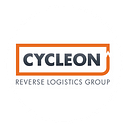3 Ways the Return Process Can Help Reduce the Environmental Footprint of Commerce
Just a few tweaks to your existing returns flow could facilitate a greener operation.
The production and sale of newly produced consumer items is not a sustainable practice. The manufacturing, transportation, and packaging of these goods alone are impactful on the environment. A process that not only requires many materials, but also vast amounts of energy, which often derive from non-renewable resources. Lately, there has been a lot of discussion on how e-commerce especially can be made more sustainable. In one survey, over 80% of participants felt that companies should be more committed to improving the environmental impact of their trade. One factor raised here in relation to commerce is the role that returns play. In short, how can a return operation be designed around, and support, the circular economy to help reduce the overall environmental impact of a commerce transaction.
Read on to discover our insights into how this can be achieved. Just a few tweaks to your existing returns flow could facilitate a greener operation.
An Environmentally Conscious First Mile
Making returns more sustainable starts right at the beginning of the journey with the customer. Offering them greener options for the first mile sets off the return process on good footing. From the moment a customer decides to return an item, there are ways to introduce sustainable actions.
For example, allowing consumers to return online, via portals or through your website, facilitates features such as paperless return labels and the digitalization of documents such as receipts and track & track information. This dramatically reduces the use of paper materials in your supply chain, which is of course much less wasteful.
Additionally, working with postal carriers who offer green options such as low-emission or electric vehicles in their network, is very beneficial. Collaborating with postal carriers who have a wide network is also important as you can then offer customers local drop-off point options; places consumers can walk to, or which is perhaps already along their daily travel route. The more of these drop-off points you make available for returns, the more you avoid customers making unnecessary travel journeys; driving down the vehicle emissions associated with the first mile.
Additionally, sustainability is fast becoming a leading consumer demand. A recent study found that the Covid-19 pandemic has only accelerated this, with 45% of shoppers now actively searching for more sustainable shopping options.
Value Recapturing Warehouse Activities
In warehouses and DCs there are yet more opportunities to embrace a more sustainable return process. Largely through the warehouse activities that help to recapture the value of these items. At Cycleon, we offer product grading, reconditioning and re-fulfilment options as part of our return solution that we offer to our retail partners.
Product Grading — We assess the quality and condition of a returned item, from which a grade is assigned. If a product is still in pristine condition (A-Grade) then an ideal end destination for this return can be immediately assigned. For example, it can be re-routed to somewhere it can directly be resold. Returns of a lower quality can either be sent to outlet stores, resale platforms or reconditioned so that they meet the criteria for a higher grade.
Reconditioning — Here we clean, repair, re-bag and re-tag items so that they can be resold to customers as new. This recaptures the value of the product and the original sale, all the while preventing these non-A-grade items from becoming waste stock.
Re-fulfilment — In a return flow designed to integrate with the circular economy, smart re-routing is an item’s final destination in a warehouse setting. Returned products are sent to where their value will be maintained. This not only benefits retailers by protecting profit margins but it’s also a greener solution. Ensuring that returns have a second life, and do not end up as waste material.
A Network of Localized Solutions
An important step in securing a more sustainable return operation is to have access to a network of local solutions. Including postal carriers, warehouse activities, and redistribution locations, such as stores and storage facilities. In short, the sooner returns can reach these touchpoints, the less emissions are spent transporting these items longer distances.
The consolidation of returns is also essential to this process. Grouping items together that are of a similar nature, from the same brand, or heading to the same destination, also helps to avoid unnecessary and oversees/cross-border transport.
Keeping returns within a local circular economy is not only beneficial to the environment, but also for customers. They can expect quicker lead and refund times as a result, an attribute that is highly valued and improves consumer experience.
At Cycleon we’re committed to reducing the environmental footprint associated with returns. By introducing greener options and planet-proof solutions here, we can help to also improve the overall sustainability of commerce. A goal that retailers, suppliers, and also customers, are striving towards together.
